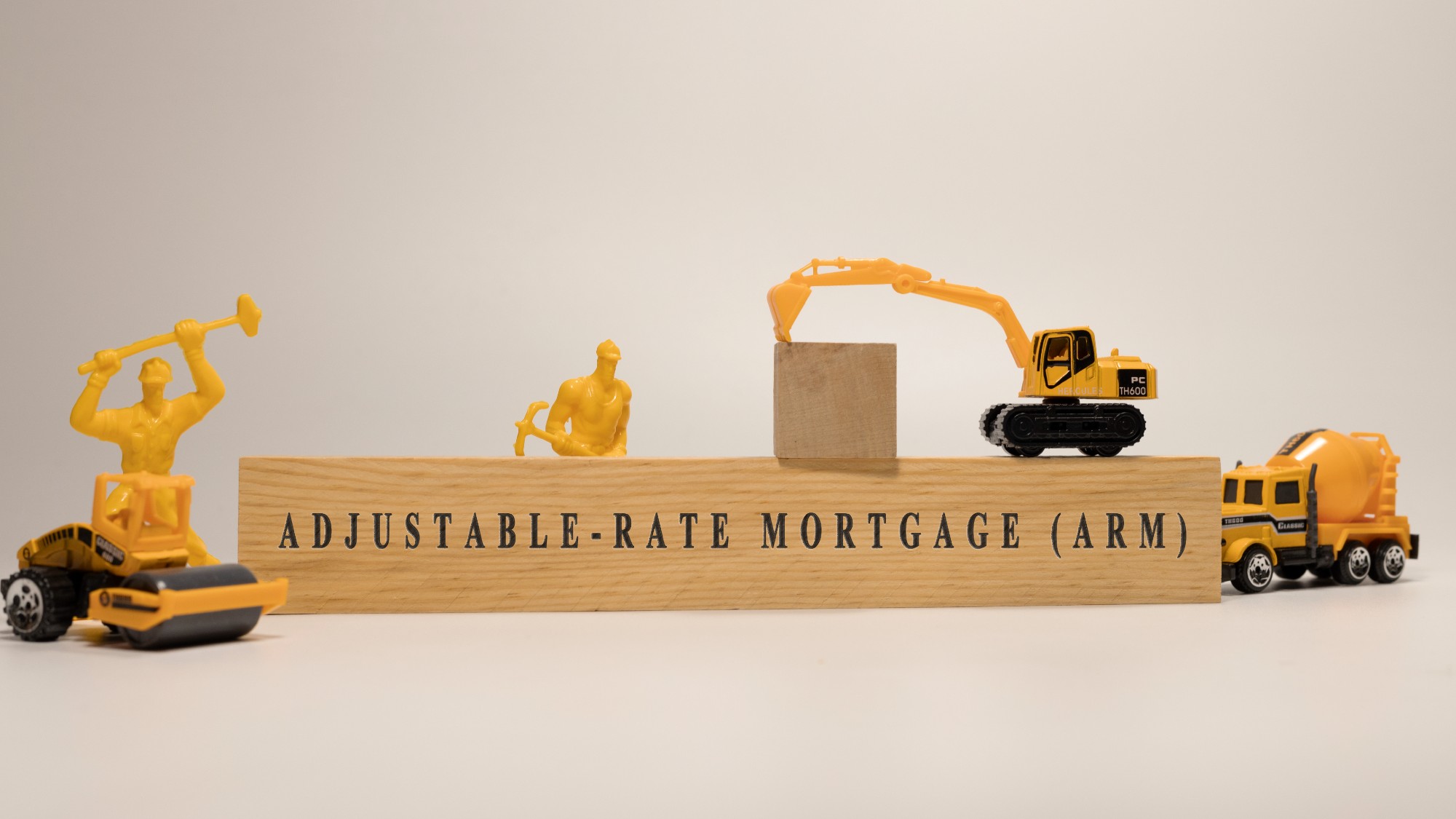Pros and cons of buy-to-let investing
Rental prices are rising but so are mortgage costs

Buy-to-let has historically been one of Britain’s best-loved investments thanks to steady house-price growth, high rents and low borrowing costs.
The UK has an estimated 2.65 million landlords, equating to 3,959 for every 100,000 people, according to recent analysis by letting specialists Benham & Reeves. But with landlords now facing higher taxes and falling house prices, “the lustre of buy-to-let has faded significantly”, said The Times Money Mentor.
Landlords are also facing extra pressure thanks to new requirements to make rental homes more energy efficient.
The Week
Escape your echo chamber. Get the facts behind the news, plus analysis from multiple perspectives.

Sign up for The Week's Free Newsletters
From our morning news briefing to a weekly Good News Newsletter, get the best of The Week delivered directly to your inbox.
From our morning news briefing to a weekly Good News Newsletter, get the best of The Week delivered directly to your inbox.
New rental homes must have a minimum energy performance certificate (EPC) rating of C from 1 April 2025, and this will be extended to existing tenancies from April 2028.
“Thousands of landlords are selling up ahead of Government net zero rules,” said The Daily Telegraph. The newspaper cited figures from property data company TwentyCi showing that more than 65,000 rental properties went up for sale in the first three months of the year, and of these, some 36,460 had low energy efficiency, with EPC ratings of D or below.
There is still money to be made, The Times Money Mentor said, “especially in cities popular with workers and students, pushing up demand and therefore rent”. But “for some people it is simply the wrong kind of investment.”
1. Pro: regular and rising rental income
Renting out a property provides a regular source of income that can help boost your savings or even form part of your retirement plan.
A free daily email with the biggest news stories of the day – and the best features from TheWeek.com
A “chronic imbalance” between the supply of homes to rent and the level of demand from renters resulted in significant rent hikes in 2022, said Zoopla. London, Manchester and Glasgow saw the biggest hikes, at 16.1%, 14.8% and 13.1% respectively during the year.
That has continued into 2023 with average monthly rents outside London soaring to a record high of £1,190 in the first quarter, according to Rightmove. Landlords in London have also started charging tenants in the capital more than £2,500 on average for the first time.
National average asking rents outside London have gone up for 13 consecutive quarters since the end of 2019, the property website said, although the pace of growth has slowed recently and was up 1.5% on a quarterly basis.
Rents in the capital rose just 0.9% during the quarter – the smallest increase in two years.
The average rental yield – the amount landlords can receive from rents as a proportion of their property’s value – in Britain is currently at around 5.8%, according to Rightmove. This is up 0.2% annually.
2. Con: higher mortgage costs and extra taxes
Building a buy-to-let portfolio is not as cheap as it used to be and there are fewer tax benefits. Since 2016, second home owners including landlords have had to pay an extra 3% stamp duty on property purchases, adding to the cost of buying.
Pre-2016, landlords could also deduct the interest they pay on their mortgage to reduce their tax bill, but this has been restricted to the basic tax rate of 20%.
With mortgage interest relief no longer on offer, said Unbiased, many landlords have seen their profits significantly reduce – in particular, higher rate taxpayers as they can no longer get the full 40% relief.
Landlords are also facing higher buy-to-let mortgage rates, said Which?. Rates had already been climbing but “rose sharply following the government’s mini-budget in September” and several lenders pulled products.
The number of buy-to-let mortgages on the market has rebounded to levels last seen in August 2022, before the mini-budget caused the sector to shrink, said This Is Money. But buy-to-let mortgage rates still remain “much higher than they were two years ago” at around 5%.
3. Pro: capital growth
Rising house prices are traditionally a benefit of buy-to-let, boosting your property’s capital value and providing a “relatively safe long-term investment”, said estate agent Ellis & Co.
The idea is that “over the long term the value of your property should increase and provide you with a profit when you come to sell it”.
4. Con: slowing house price growth
House prices appear to be dipping at the moment, which could hit landlord returns.
Analysts have predicted house price falls this year. Both Lloyds and Halifax expected property prices to fall 8% in 2023, said MoneyWeek, while Nationwide and Zoopla predicted falls of 5%. The Office for Budget Responsibility (OBR) expects prices to fall 9% over the next two years.
The latest official figures from the Land Registry show average house prices fell by 1% between January and February 2023, while annual growth slowed from 6.5% to 5.5%.
If property prices fall, a landlord’s capital will reduce, said Unbiased, and if you have an interest-only mortgage, “you’ll need to make up for any shortfall if the property sells for less than you bought it for”.
Although average capital value is predicted to fall this year, Emma Wells of Leaders estate agency said in Property Reporter that “this is on the back of double-digit market growth for many properties through the pandemic and is expected to recover well within five years”.
5. Pro: plenty of demand
Demand for rental properties only looks likely to increase due to lower levels of new investment by landlords, said Zoopla, as well as a strong labour market and higher borrowing costs for home buyers.
The number of available properties to rent was 8% higher annually as of the end of the first quarter of 2023 but is still 46% below 2019’s level, according to Rightmove. Meanwhile, the number of tenants enquiring about moving is now 4% higher than this time last year and 48% higher than 2019.
That should keep landlords busy if they need to fill properties.
6. Con: a hands-on investment
There are plenty of responsibilities involved with buy-to-let beyond simply collecting rent.
The property needs to be in a suitable condition and meet certain energy standards, plus you may need to “respond to calls about a flooded bathroom” or “deal with the occasional nightmare tenant”, said The Times Money Mentor.
You could get a letting agent to help, said The Money Edit, and charges are likely to be the equivalent of a month’s rent for finding tenants, while full management can eat up between 12 and 20% of your monthly rental.
Another option is to manage this yourself, but it can be time-consuming, the financial website added, “and, if you’ve not had experience of managing a rental property before, it could prove a false economy”.
Marc Shoffman is an NCTJ-qualified award-winning freelance journalist, specialising in business, property and personal finance. He has a BA in multimedia journalism from Bournemouth University and a master’s in financial journalism from City University, London. His career began at FT Business trade publication Financial Adviser, during the 2008 banking crash. In 2013, he moved to MailOnline’s personal finance section This is Money, where he covered topics ranging from mortgages and pensions to investments and even a bit of Bitcoin. Since going freelance in 2016, his work has appeared in MoneyWeek, The Times, The Mail on Sunday and on the i news site.
-
 Venezuela’s Trump-shaped power vacuum
Venezuela’s Trump-shaped power vacuumIN THE SPOTLIGHT The American abduction of Venezuelan President Nicolás Maduro has thrust South America’s biggest oil-producing state into uncharted geopolitical waters
-
 Most data centers are being built in the wrong climate
Most data centers are being built in the wrong climateThe explainer Data centers require substantial water and energy. But certain locations are more strained than others, mainly due to rising temperatures.
-
 ‘Maps are the ideal metaphor for our models of what the world might be’
‘Maps are the ideal metaphor for our models of what the world might be’Instant Opinion Opinion, comment and editorials of the day
-
 Why it’s important to shop around for a mortgage and what to look for
Why it’s important to shop around for a mortgage and what to look forThe Explainer You can save big by comparing different mortgage offers
-
 What will next year’s housing market look like?
What will next year’s housing market look like?The Explainer Here is what to expect from mortgage rates and home prices in 2026
-
 4 often overlooked home maintenance tasks that could cost you later
4 often overlooked home maintenance tasks that could cost you laterThe Explainer A little upkeep now can save you money down the road
-
 What are portable mortgages and how do they work?
What are portable mortgages and how do they work?the explainer Homeowners can transfer their old rates to a new property in the UK and Canada. The Trump administration is considering making it possible in the US.
-
 What’s an adjustable-rate mortgage and what are the risks?
What’s an adjustable-rate mortgage and what are the risks?The Explainer Buyers are increasingly willing to take the gamble of a changing rate
-
 Is it a good investment to buy a house?
Is it a good investment to buy a house?The Explainer Less young people are buying homes, opting to rent and invest in the stock market instead
-
 How will Fed rate cuts affect the housing market?
How will Fed rate cuts affect the housing market?the explainer An anticipated series of Federal Reserve cuts could impact mortgage rates
-
 What's a bridge loan and how could it make buying your next home possible?
What's a bridge loan and how could it make buying your next home possible?The Explainer This type of loan has both pros and cons